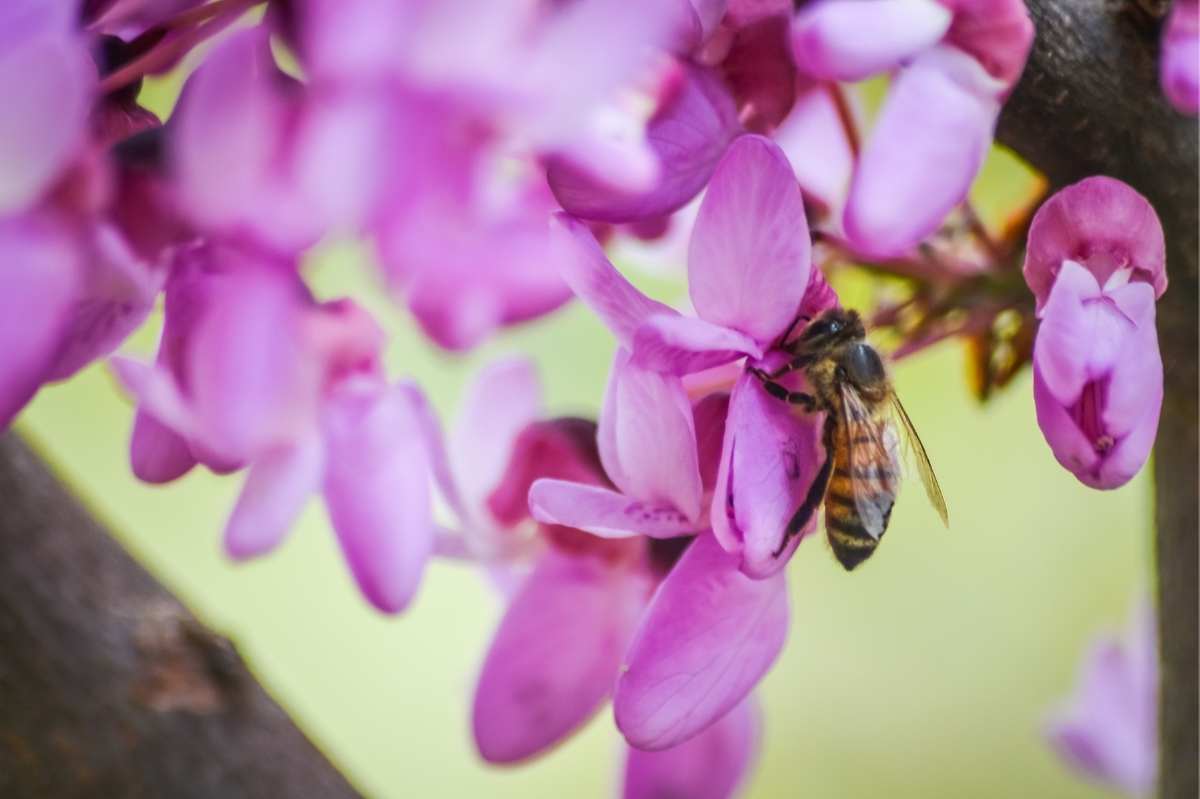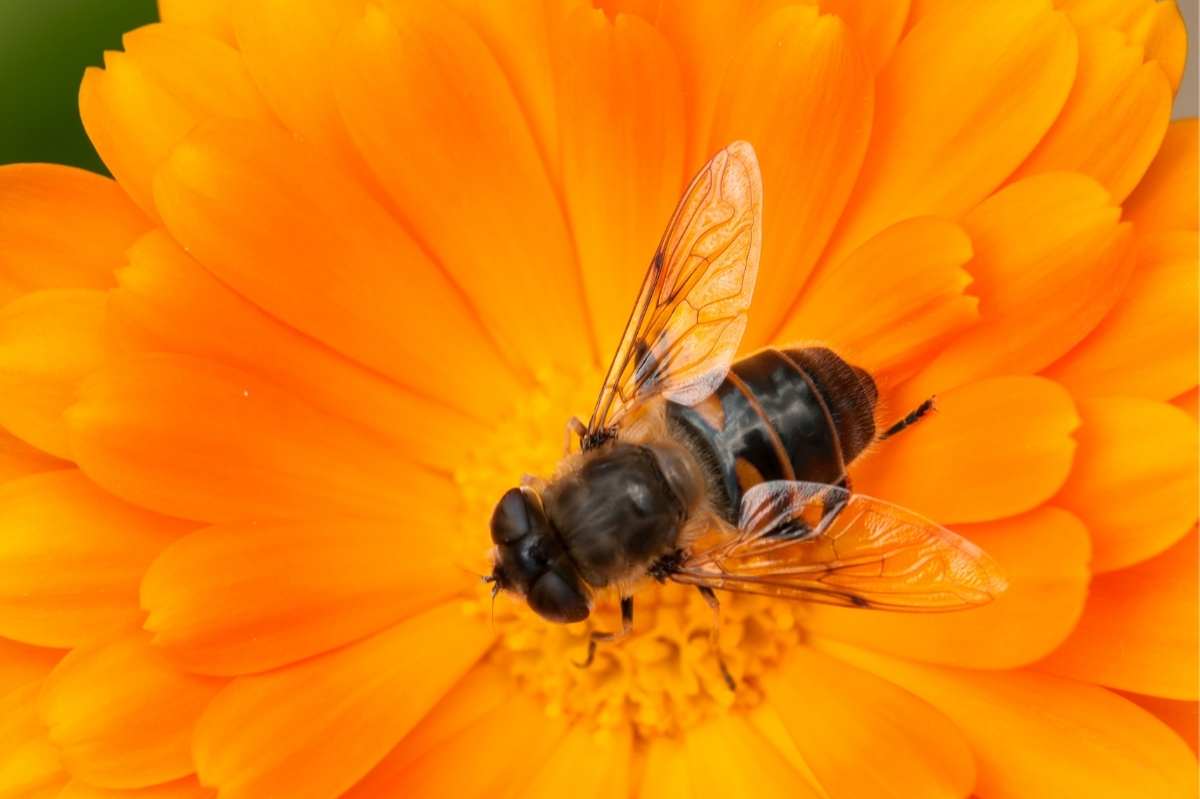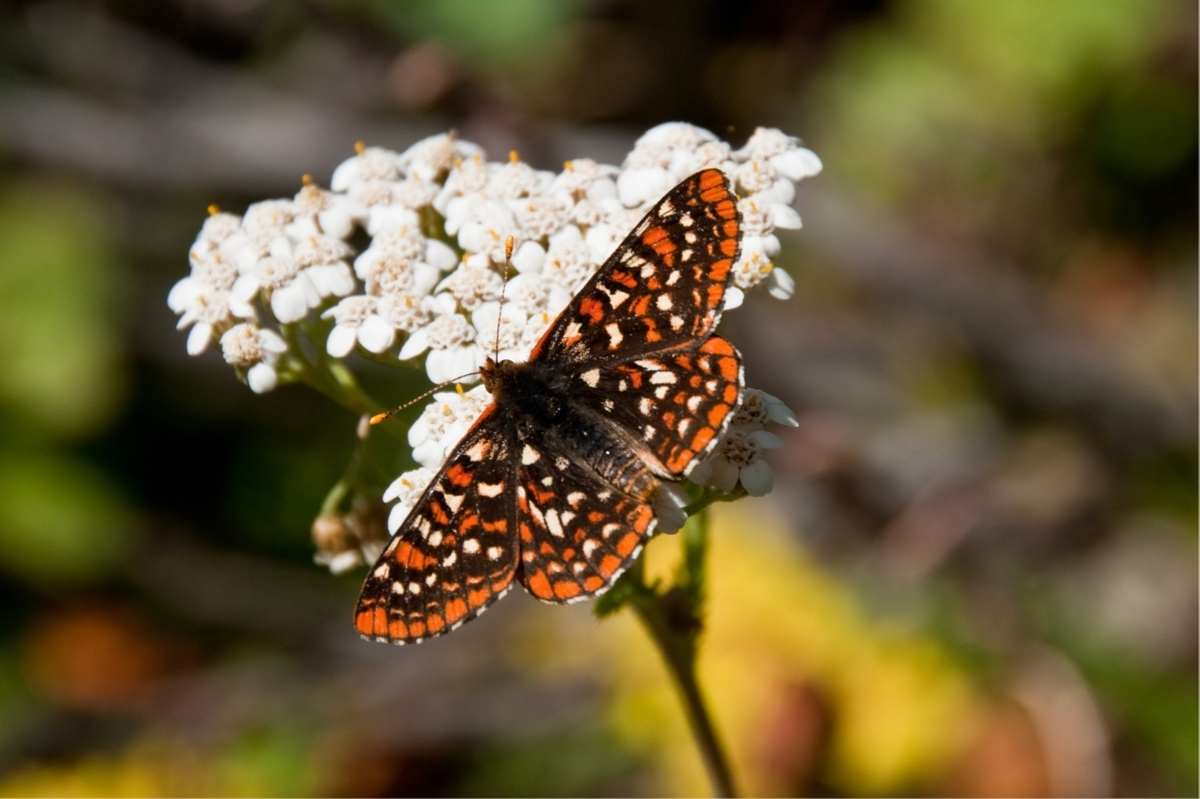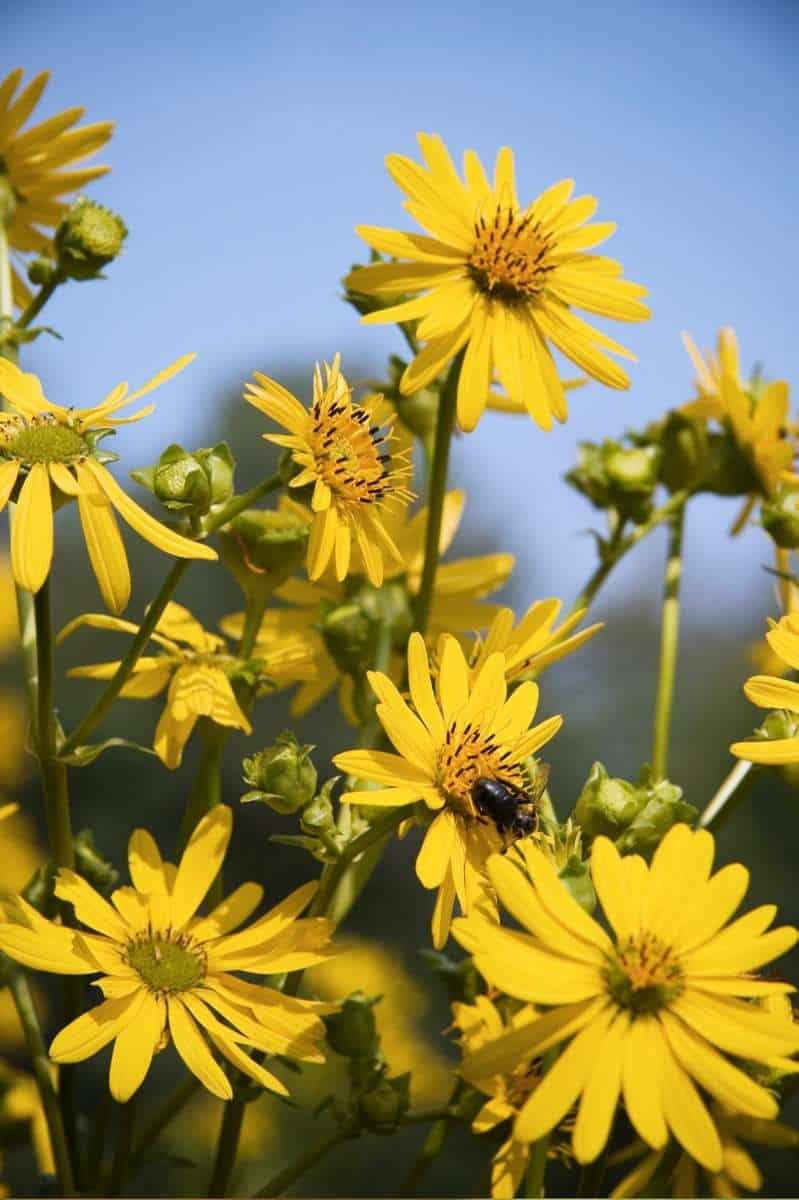One of the very best things you can do for the health of our planet (and your vegetable garden) is to plant more pollinator plants. If you can devote an entire space to a pollinator garden? Amazing! But even if you just have space to pop in one or two pollinator friendly plants, you’ll be doing a lot to help create a safe habitat for pollinators in your area.
Here at the Growfully gardens, we have large pollinator garden beds in the front of our garden space full of plants that attract bees, butterflies, and other beneficial insects. We also make sure to interplant native pollinator plants throughout all of our garden beds. We thought it would be helpful to pull together a list of our favorite plants that attract bees, butterflies, and other pollinator insects—use this list as a jumping off point for your very own pollinator garden work!

Table of Contents
What is the purpose of a pollinator garden?
A well-designed pollinator garden can serve many purposes! Obviously, we want the top goal to be to attract bees, butterflies, and other beneficial insects to our spaces by giving them a safe habitat. But pollinator gardens can also be stunningly beautiful, plus create lots of opportunity to harvest both food and herbal medicines!

What makes a good pollinator garden?
When designing your pollinator garden, you want to focus on achieving five main objectives:
Variety: While sticking one or two plants in the ground is better than nothing, a truly robust pollinator garden is filled with many, many different varieties of plants. This not only attracts different kinds of insects (each has their fave flower!) but also provides nectar and shelter throughout the entire growing season.
Native-first: The best way to support the native insect populations in your area is to plant native pollinator plants. They go together like peanut butter and jelly! We highly recommend that your pollinator garden focuses mostly (if not entirely) on plants native to your area.

Providing nectar and food through the entire season: Insects need to eat all season long, so if you just plant one flower that only blooms for three weeks out of the year—your garden isn’t sustaining pollinators for very long. Provide nectar and food sources throughout the entire growing season. Bonus: growing plants that flower throughout the growing season makes the garden look pretty at all times!
Provide shelter for all life stages: Most people focus on providing food/nectar for pollinators in their garden in the form of flowers—which is GREAT, but just like us humans, pollinators also require shelter. You can do this via insect hotels or other man-built structures, but often the most successful way to give your insects some housing is to plant the proper native plants plus leave garden debris for them to set up shop in.
Have a water source nearby: Pollinators need H20. If you are near a water source like a lake, pond, river, or even a small creek, you’re good to go! But if a water source is hard to come by, you can make your own by filling plant saucers with stones, and then filling regularly with fresh water. The stones act as a landing zone for the pollinators when they need a drink.

How do you find native pollinator plants in your area?
We’ve already mentioned the importance of focusing on native plants for your pollinator garden, but how do you go about tracking down what is native to your area? You’re in luck—the non-profit organization Pollinator Partnership has planting guides based on your zip code for both U.S. and Canada regions.
Growfully Protip
Your local extension office will also have hyper-local suggestions for native pollinator plants for your area. Some even sell seedling plugs or can connect you with a local nursery that focuses on natives.

When it comes time to purchase your native plants, we highly recommend either starting your own from seed or checking in locally to find a native-plant-focused nursery. If neither of those work for you, you can check out Prairie Moon Nursery, which has one of the largest collections of native U.S. plants in the country.
Our pollinator garden plant list
As we’ve mentioned, we really would love for you to focus on native, local plants for your pollinator garden, so everyone’s list is going to be different! But here is a general list of plants that will work almost everywhere.

We still recommend checking in with your local guides to learn the specific varieties that work best for your area. For example, coneflower is a great option for most regions, but there are 10 distinct species of native coneflower—and which one is best for you will depend on where you live. Happy planting!
- Aster (Aster spp.)
- Bells/Phacelia (Phacelia spp.)
- Black Eyed Susan (Rudbeckia spp.)
- Catnip (Nepeta spp.)
- Coneflower (Echinacea spp.)
- Lamb’s Ears (Stachys spp.)
- Lavender (Lavandula spp.)
- Oregano (Origanum spp.)
- Penstemon (Penstemon spp.)
- Redbud (Cercis spp.)
- Rosemary (Rosemarinus officinalis)
- Sage (Salvia spp.)
- Sunflower (Helianthus spp.)
- Verbena (Verbena spp.)
- Yarrow (Achilliea millefolium)
Growfully Protip
We didn’t list trees here, but know that native trees are an important part of any pollinator-friendly habitat.

In the Growfully gardens, we have all of these plants listed above, plus these following plants that are native to our Southern Indiana region:
- Columbine (Aquilegia canadensis)
- Bee Balm (Monarda punctata)
- Joe Pye Weed (Eupatorium purpureum)
- Goldenrod (Solidago speciosa)
- Virgina Creeper (Parthenocissus quinquefolia)
- Honeysuckle (Lonicera sempervirens)
- Milkweed (Asclepias spp.)







